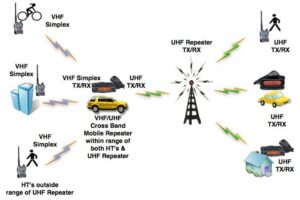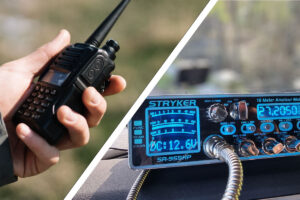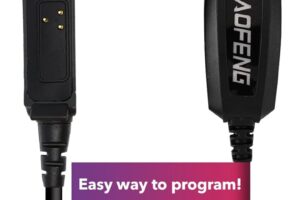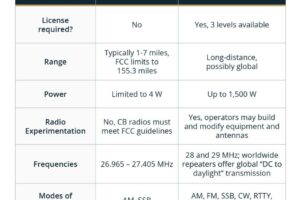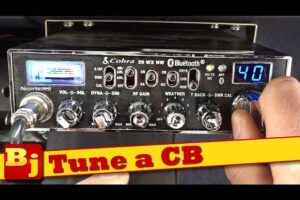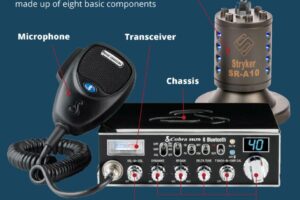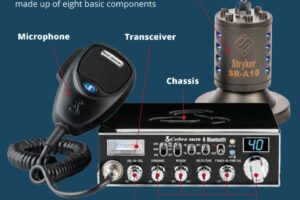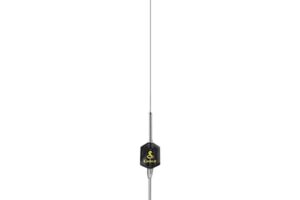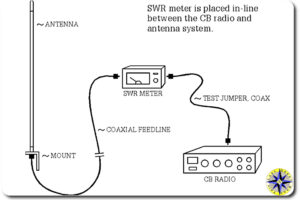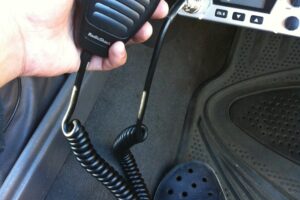Can Cb Radio Talk to Walkie Talkie: Exploring Connectivity Options
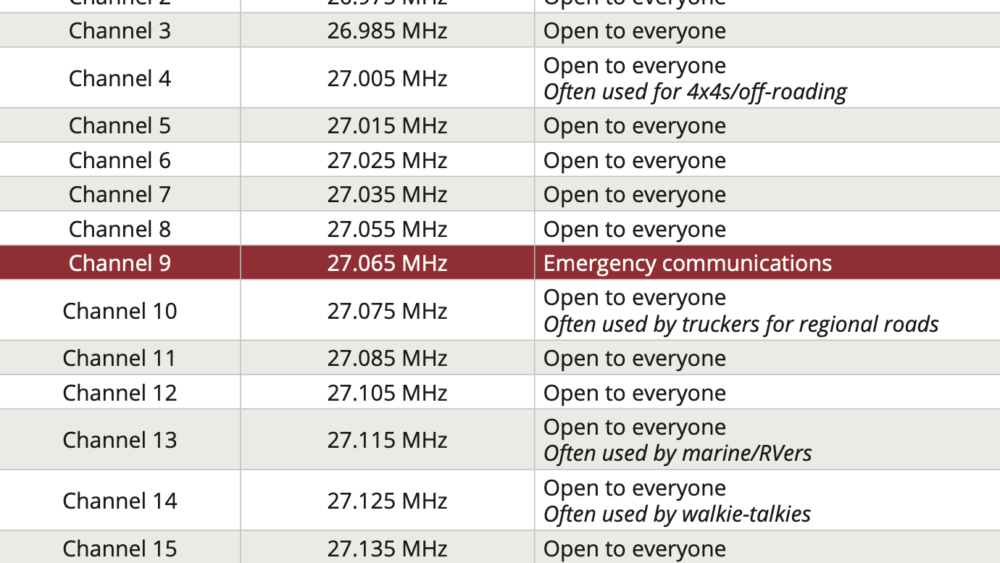
Yes, CB radios can talk to walkie-talkies, but there are limitations. The compatibility depends on frequency bands and technical specifications.
CB radios and walkie-talkies are popular communication tools. They are used by hobbyists, truck drivers, and outdoor enthusiasts. But can they communicate with each other? Understanding the differences and similarities between these devices is important. This blog will explore how CB radios and walkie-talkies work together, if at all.
We will discuss the technical aspects, frequency ranges, and practical applications. By the end, you will know if your CB radio can talk to a walkie-talkie. Let’s dive into the world of two-way communication.

Credit: midlandusa.com
Introduction To Cb Radios And Walkie Talkies
When it comes to communication devices, CB radios and walkie talkies are two popular choices. Both have their unique features and serve different purposes. But can CB radios talk to walkie talkies? Let’s start by understanding what each device offers.
Key Features
CB radios, or Citizen Band radios, operate on 40 shared channels within the 27 MHz band. They are known for their long-range communication ability, often reaching up to 20 miles depending on terrain and conditions.
Walkie talkies, on the other hand, are handheld devices typically operating on UHF and VHF frequencies. They are user-friendly and have a range of up to 6 miles, which makes them perfect for short-range communication.
Both devices have their strengths. CB radios are great for road trips and long-distance communication. Walkie talkies are ideal for local, on-the-go communication.
Common Uses
CB radios are often used by truckers, off-road enthusiasts, and emergency services. Truckers rely on CB radios to communicate road conditions and keep each other entertained during long hauls. Off-roaders use them for coordinating during trail runs.
Walkie talkies are commonly used in schools, events, and outdoor activities. Imagine organizing a large event—walkie talkies keep the team connected without needing cell service.
In my experience, using a walkie talkie during a camping trip keeps everyone in the loop. You don’t have to shout across the campsite, and it adds an element of adventure for the kids.
So, can CB radios and walkie talkies talk to each other? Unfortunately, they operate on different frequencies and are not directly compatible. However, understanding their unique features and uses helps you choose the right tool for your needs.
What’s your primary use case for communication devices? Understanding this can help you decide between a CB radio or a walkie talkie. Share your thoughts in the comments below!
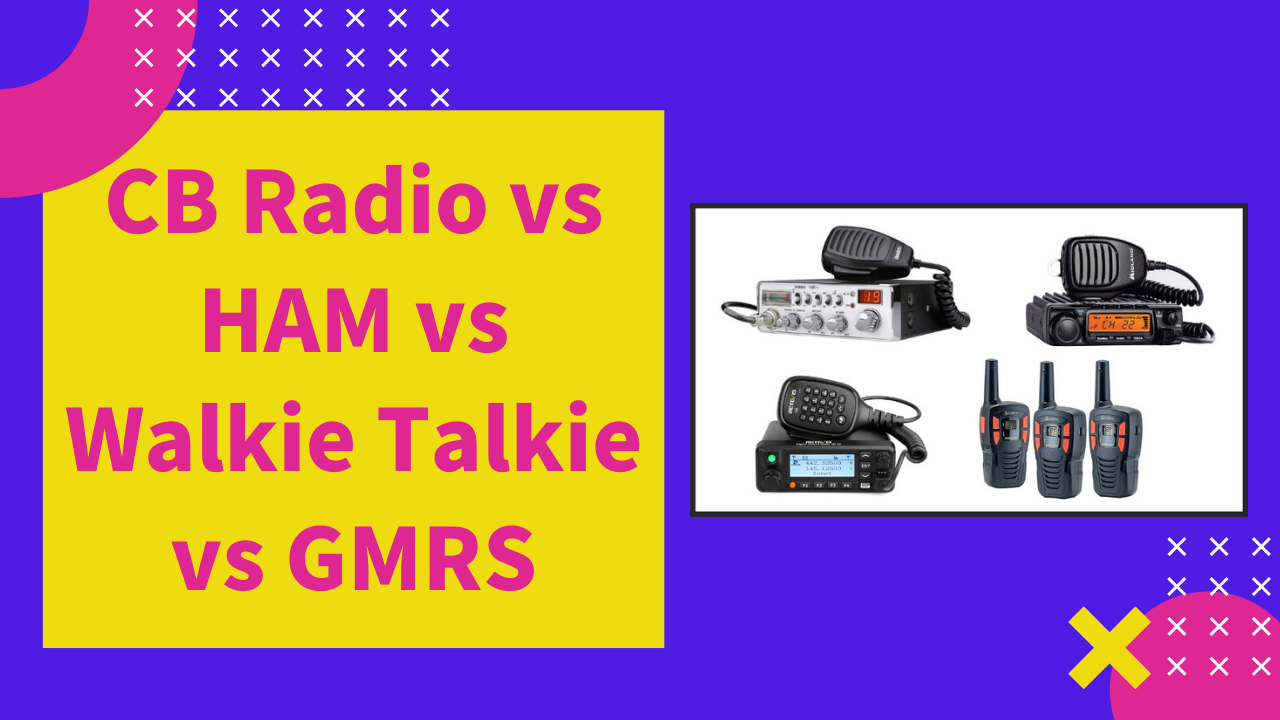
Credit: www.fmradiobroadcast.com
Technical Differences
Cb radios and walkie talkies operate on different frequencies. This makes direct communication between them impossible. Cb radios use AM frequencies, while walkie talkies typically use FM frequencies.
When it comes to communication devices, many people wonder if a CB radio can talk to a walkie-talkie. Understanding the technical differences between these two devices is essential to answering this question.Frequency Bands
CB radios operate on 40 channels within the 27 MHz (megahertz) band. This frequency is designated by the FCC for public use. Walkie-talkies, on the other hand, typically use frequencies in the UHF (ultra-high frequency) range, specifically 462-467 MHz. These frequencies are also public but are part of a different band. Because CB radios and walkie-talkies use different frequency bands, they cannot directly communicate with each other. It’s like trying to tune in to a radio station that’s broadcasting on a different wavelength.Transmission Range
CB radios generally have a much longer transmission range compared to walkie-talkies. A CB radio can communicate over several miles, especially with a good antenna and favorable conditions. Walkie-talkies usually have a shorter range, often limited to a few miles. Their compact design and lower power output restrict their reach. If you’re planning to stay connected over long distances, CB radios are a better choice. However, if you’re working within a smaller area, walkie-talkies can be more practical and convenient. Do you need to communicate across a vast area, or are you just looking to stay connected within a local zone? Your answer will guide your choice between these two devices. Understanding these technical differences can help you make an informed decision. Whether you’re on a road trip or coordinating a local event, knowing the capabilities of your communication device is crucial.Compatibility Challenges
Communicating between CB radios and walkie-talkies can be challenging. They operate on different frequencies and systems. Compatibility issues may arise.
### Compatibility Challenges When it comes to using CB radios and walkie-talkies, one might wonder if these two communication devices can talk to each other. It sounds like a simple question, but the answer involves a few technical details. Let’s break down the key challenges that impact their compatibility. ###Signal Interference
Signal interference is a major issue when trying to connect CB radios with walkie-talkies. CB radios typically operate on a frequency band of 26.965 to 27.405 MHz. Walkie-talkies, however, usually work on different bands, such as the Family Radio Service (FRS) or General Mobile Radio Service (GMRS), ranging from 462 to 467 MHz. This difference in frequencies means they don’t naturally communicate. Imagine trying to tune into a radio station that doesn’t exist on your dial. It’s the same principle here. Adding to the complexity, even if you somehow match the frequencies, there’s still the issue of interference from other devices. For instance, I once tried using my CB radio at a crowded event, and the signal was a mess due to all the other electronic gadgets around. This kind of interference can completely disrupt your communication attempts. ###Communication Protocols
Beyond signal interference, communication protocols present another hurdle. CB radios and walkie-talkies use different protocols to encode and decode messages. CB radios are often used in a continuous wave (CW) mode, while walkie-talkies employ frequency modulation (FM). Think of it like trying to play a DVD in a VCR—different formats mean no communication. Even if you are tech-savvy and willing to tinker, aligning these protocols is tricky. It requires specialized equipment and a deep understanding of radio electronics. So, before you decide to use your CB radio to chat with someone on a walkie-talkie, ask yourself: Is it worth the technical hassle? ### Engaging Your Curiosity Have you ever tried to use these devices together? What challenges did you face? Understanding these compatibility issues can save you time and frustration. So next time you grab your radio, you’ll know exactly what to expect.Connecting Cb Radios To Walkie Talkies
Connecting CB radios to walkie talkies can enhance communication abilities. This connection can be useful in various scenarios. It’s essential to understand how these devices interact. Let’s explore the ways to connect them effectively.
Using Adapters
One way to connect CB radios to walkie talkies is by using adapters. Adapters help bridge the gap between different devices. They ensure compatibility and seamless communication. Some adapters are specifically designed for this purpose. They can convert signals between CB radios and walkie talkies. Make sure to choose the right adapter for your devices.
Frequency Matching
Another crucial aspect is frequency matching. CB radios and walkie talkies operate on different frequencies. To connect them, you must align their frequencies. This process involves tuning both devices to the same frequency. Start by checking the frequency range of each device. Then, adjust the settings to match frequencies. This ensures clear and uninterrupted communication.
Legal Considerations
Legal considerations are crucial when trying to communicate between CB radios and walkie-talkies. Understanding the laws ensures compliance and avoids fines. Let’s explore the licensing requirements and regulatory compliance.
Licensing Requirements
CB radios operate on designated frequencies without needing a license. The FCC oversees these frequencies. Walkie-talkies, especially those with higher power, may require a license. Ensure you check local regulations. Using unlicensed frequencies can lead to penalties.
Regulatory Compliance
Both CB radios and walkie-talkies must follow specific rules. The FCC sets these regulations. CB radios have limitations on power and frequency use. Walkie-talkies also have guidelines. Following these rules prevents interference and maintains clear communication. Always verify your device’s compliance before use.

Credit: swinginwest.com
Practical Applications
Connecting a CB radio to a walkie-talkie is generally not possible due to different frequencies. CB radios operate on 27 MHz, while walkie-talkies usually use 462-467 MHz.
Practical Applications If you’ve ever wondered about the practical applications of using a CB radio to communicate with a walkie-talkie, you’re not alone. Many outdoor enthusiasts and emergency responders have found creative ways to make these devices work together, enhancing communication in critical situations. Let’s dive into how you can use these tools to your advantage in various scenarios.Outdoor Adventures
Imagine you’re on a hiking trip with friends. You have a CB radio, and they have walkie-talkies. You might think these devices can’t talk to each other, but with the right setup, they can. By using a CB radio with a handheld microphone and speaker, you can relay messages to your friends on their walkie-talkies. This can be extremely useful when you’re spread out over a large area and need to stay in touch. During a recent camping trip, I found this particularly useful. We split into two groups to explore different trails. My CB radio allowed me to stay in contact with the other group who only had walkie-talkies, ensuring we could coordinate meet-up points and share important updates.Emergency Situations
In emergencies, clear communication can be a lifesaver. If you’re in an area with no cell service, a CB radio and walkie-talkie combo can bridge the gap between different groups. For example, during a community disaster drill, we used CB radios to communicate with team leaders who had walkie-talkies. This setup ensured everyone received instructions promptly, regardless of their device. Have you considered how you’d handle communication if your phone battery dies during a crisis? Having both a CB radio and walkie-talkies can provide a reliable backup, keeping you connected when it matters most. In both of these scenarios, the key is preparation. Make sure your devices are compatible and practice using them together before you need them. This way, you’ll be ready to leverage their full potential in any situation.Advantages And Disadvantages
CB radios and walkie talkies operate on different frequencies, making direct communication difficult. Adapters can connect them, but signal clarity may suffer.
When discussing whether a CB radio can talk to a walkie-talkie, it’s essential to weigh the advantages and disadvantages. Understanding both the pros and cons can help you decide if this interconnectivity is suitable for your needs. Let’s delve into the specific advantages and limitations of using CB radios and walkie-talkies together.Pros Of Interconnectivity
One major advantage is the expanded communication range. CB radios typically offer a much greater range than walkie-talkies. This means you can stay in touch over longer distances. For example, truck drivers often use CB radios to communicate over miles, while walkie-talkies are perfect for short-range communication, like within a campsite. Another benefit is versatility. Using both devices allows you to switch between long-range and short-range communication easily. Imagine you’re on a road trip with friends. You can use the CB radio for car-to-car communication and walkie-talkies when you’re exploring on foot. Lastly, there’s the aspect of redundancy. If one device fails, you have another to fall back on. This can be crucial in emergency situations where every second counts. Having multiple communication options ensures you’re never out of touch.Cons And Limitations
However, this setup is not without its limitations. One significant drawback is compatibility. CB radios and walkie-talkies operate on different frequency bands, making direct communication challenging. You may need additional equipment or adapters to bridge the gap, which can be a hassle. Another disadvantage is the learning curve. Each device has its own set of controls and features, which can be confusing. If you’re not tech-savvy, this could lead to frustration and communication breakdowns. Battery life is another issue. Walkie-talkies generally have shorter battery life compared to CB radios. If you’re relying on both devices, you need to manage battery usage effectively. Imagine your walkie-talkie dying in the middle of a hiking trip—quite inconvenient, right? So, what’s your take? Do the advantages outweigh the drawbacks for you? Understanding these aspects can help you make an informed decision about integrating CB radios and walkie-talkies into your communication toolkit.Future Of Radio Communication
Radio communication has evolved significantly over the years. It is crucial for various industries. The future of radio communication looks promising. With technological advances, new possibilities emerge. Trends and predictions offer exciting insights into what lies ahead.
Technological Advances
New technologies enhance radio communication. Digital radio systems provide clearer signals. They reduce interference, improving communication quality. Software-defined radios offer flexibility. Users can adapt frequencies and protocols easily. The integration of AI brings smart features. Radios can now predict and adjust to conditions.
Advanced encryption ensures secure communication. Privacy is more protected than ever. Battery life is extended with better power management. Devices can operate longer without recharging. Compact designs make radios more portable. Users can carry them comfortably during activities.
Trends And Predictions
The use of radio communication is expanding. More industries are adopting it. Emergency services rely heavily on radios. They ensure quick and reliable communication. The military uses advanced radio systems. They provide secure and robust connections.
Public events benefit from radio communication. Coordination becomes seamless and efficient. The integration of GPS enhances functionality. Radios can track locations and movements. Predictive analytics improve performance. Radios can forecast signal strength and adjust.
Future radios will be more user-friendly. Interfaces will be simplified for ease of use. Voice recognition will become standard. Users can control radios with voice commands. The connection between CB radios and walkie talkies will improve. Cross-communication will be more efficient.
Frequently Asked Questions
Can A Cb Radio Communicate With A Walkie Talkie?
No, a CB radio cannot communicate directly with a walkie talkie. They operate on different frequencies and systems.
Does Anybody Talk On Cb Radios Anymore?
Yes, people still use CB radios, especially truckers and hobbyists. CB radios are popular for communication and emergencies.
Can You Talk To Friends On Cb Radio?
Yes, you can talk to friends on a CB radio. It allows communication over short distances.
Is It Illegal To Talk On A Cb Radio?
No, talking on a CB radio is not illegal. However, you must follow FCC regulations and use approved channels.
Conclusion
CB radios and walkie-talkies serve distinct communication needs. Connecting them directly isn’t feasible. Both devices use different frequencies. CB radios operate on 27 MHz, while walkie-talkies use various bands. Communication range also varies significantly. CB radios cover wider areas. Walkie-talkies are best for short distances.
Understanding their uses helps choose the right device. Always consider your specific requirements. Ensuring compatibility is crucial. Make informed decisions for effective communication. Choose wisely to meet your needs.

